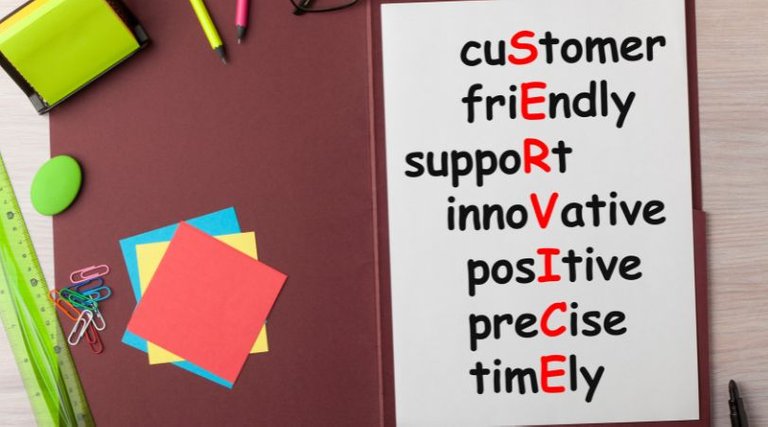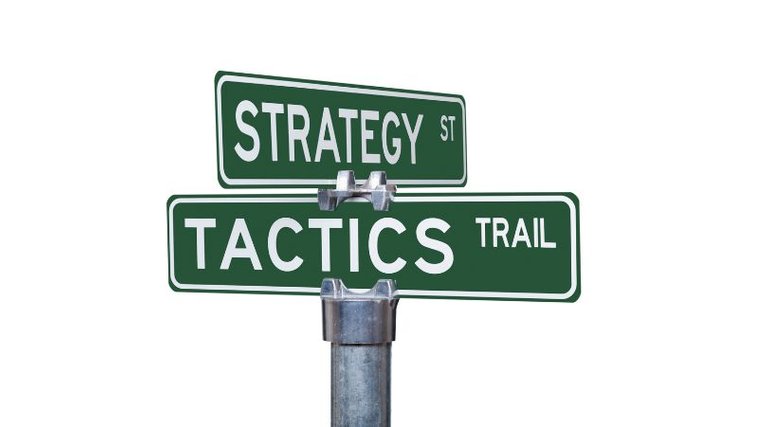
Trevor and I believe the phrase "The Customer Is Always Right" needs some updating for the 21st Century. Especially with the speed with which social media spreads the "negative" word about customers behaving badly. Too often we see "memes" or online discussions about a crazy person losing their mind in a business situation.
The audience comes to believe that these badly behaving folks are the rule rather than the exception. And so, when anyone says, "The Customers Is Always Right," the response from lots of folks today is: "NOT ALWAYS."
- But what if we examine the phrase and attempt to redefine it from a philosophical perspective, to honor the intent of the message instead of making it a rule to be followed blindly?
- What if we recognize there's a difference between a strategy to operate a small business with customers, and tactics to ensure that customers and employees are treated respectfully?
- What if the sentence instead becomes a fundamental guiding principle embedded in the culture of a small business to guide staff with resilient responses in all customer-facing situations?
STRATEGY VERSUS TACTICS

First, let's clearly define the difference between strategy and tactics. Strategy is a business determining a goal for the business to achieve; tactics are the methods used to achieve that goal.
Strategy is landing armies on the beaches of Normandy on D-Day; tactics are the "boots on the ground" grind of soldiers fighting their way towards predetermined objectives.
Strategy is a football team set out to win a game and get to the championship; tactics are the calls made by the Quarterback and the defensive coordinator to move the team down the field and gain control of the ball, the "play-by-play" if you will.
If we then redefine "The Customer Is Always Right" as a STRATEGY for the business, and embed that concept into training and culture, then staff begins to create resilient tactics that respond to customer behaviors.
Customer behaviors don't only mean "bad" behaviors. Customer behaviors can mean how a customer presents their interest in purchasing the product or service offered by the Small Business. Customer behaviors can mean how they interact with basic operations or special requests of and for the Small Business.
The goal of any business "culture" or training program should be to provide employees the tools necessary to help them make decisions "in the moment" to find the outcome most beneficial to the Small Business.
When we say "The Customer is Always Right" as a philosophy we're not saying it's a hard and fast "RULE" that is written in stone. The philosophy gives employees a guiding principle to help them accommodate Customer requests, respond to Customer complaints, and, sell more products/services to more Customers.
Therefore, if we adopt a philosophy, a strategy, of using the phrase "The Customer Is Always Right" as a guiding principle to help employees think tactically in the best interests of the company, then everyone benefits, the staff, the company, and especially the customers.
HOW TO EMBED THE PHILOSOPHY

Whether you have a formal training program, an employee handbook, or a simple onboarding training protocol for your employees, you must begin with defining and teaching what the phrase "The Customer Is Always Right" means for you and your Small Business.
Here are some key phrases you can incorporate in your training:
- Think of being kind.
- Kindness is an attitude, a principle, to help us respond to different situations, even when another person is behaving badly.
- Kindness is NOT a "one and done" event, such as "perform a single act of kindness today."
- Kindness is a state of mind.
That's what "The Customer Is Always Right" means to our organization: a philosophy to help you, our trusted employee to respond the best way possible to Customers. Don't we all want to be kind to other people every day?
People make mistakes, including customers. They may misunderstand the rules we have or how we operate our business. When confronted with that misunderstanding, sometimes people's emotions boil up due to their impatience. When we employ the concept of "The Customer Is
Always Right" then we can improve our patient communication with the customer to help guide them in a better understanding of how we do business. People cross boundaries. Make no mistake, following a philosophy of "The Customer Is
Always Right" does not mean that customers have the freedom to disrespect you or to cross boundaries. But, keep in mind that sometimes, what looks like someone crossing a boundary, might be accidental, or unintentional.
When you think first "The Customer Is Always Right" then you have the freedom of critical thinking to evaluate the situation and respond accordingly, whether that means guiding someone patiently back within acceptable behaviors, or determining that a customer is clearly WRONG in the situation.
We all lose patience sometimes. Following the principle of "The Customer Is Always Right" helps us to find small doses of patience when we need it most. Take a deep breath, focus on the philosophy, and do your best to help the customer.
While you are training your employees on the bigger picture of this strategy, you must also include a discussion on boundaries. Every small business has rules of operation, whether in pricing, how to sell a product/service, or how to respond to Customers. When employees understand the overall philosophy combined with clear definitions of rules and boundaries, they can better serve Customers.
Be sure to include specific and detailed guidance in your training and employee handbook/procedures manuals about rules and boundaries.
TEST YOUR CULTURE

Based on experiences we've had with small businesses, we created the following scenarios for you to use to train and test your staff on resiliency in customer-centric situations.
Scenario ONE: The Tire Center
You're working the front desk of a busy automotive tire center. At this tire center, Customers can purchase tires and have other basic automotive repairs done such as rotating and balancing tires, or getting an oil change, or having a wheel alignment performed.
The phone is ringing, Customers are waiting to hand over the keys for their appointments, or to make payments for their car servicing.
One Customer waits patiently in line. When she comes to the counter, you recognize her because she just paid for the service on her car ten minutes ago. She tells you, "I brought my car back in because there's still a warning light on the dashboard about tire pressure."
Do you:
- Tell the Customer she'll have to wait until you finish with the other Customers in line before you can have a tech look at her car again?
- Immediately assign one of your repair techs to go have a look?
- Excuse yourself to the other Customers in line and immediately go out to the Customer's car to assess the situation and possibly remedy same?
- Tell the Customer to go online to make an appointment for a second service visit?
The correct answers are B and C if the employee has been entrusted with the philosophy of "The Customer Is Always Right" because the employee goes outside the boundaries of the "rules" of operation to accommodate the Customer.
Scenario TWO: The Restaurant after Lunchtime
- You're the floor manager and hostess of a restaurant. Lunchtime is a busy period for the restaurant between 12–2 pm on weekdays. You've been trained that "real estate" in the form of tables is a valuable commodity, especially for parties of 3 or more people.
- It's a Tuesday afternoon around 1:40pm. A couple comes in and requests a larger table, such as where you might seat 5 customers, and you have just such a table available.
- Do you:
- Tell the Customer that table is ONLY for 5 people and you cannot spare it "in case a party of 5 comes in?"
- Tell the Customer there are only tables for 2 available for them but if they need more space they can sit at the bar?
- Tell the Customer you'd be happy to accommodate them, but if a party of 5 arrives, you might ask them to relocate?
- Tell the Customer you can seat them immediately at the table of their choice?
The correct answers are C and D because "The Customer Is Always Right" strategy rules the moment. In the absence of a party of 5, and at the tail end of the busy lunchtime period, what is there to lose by accommodating the Customer's request? Better to have a happy customer than an unhappy one.
Scenario THREE: Dealership Test Drive
A Customer arrives in the showroom on a busy Saturday morning. When a salesperson introduces herself, the Customer says, "I'm interested in buying a new car, but I cannot decide between model XX or model YY." After the salesperson reviews the features of the two different models, including pricing, the Customer asks to take both cars out for a test drive.
Do you:
- Tell the customer the dealership has a rule that no test drives are available until a "deal" has been made?
- Tell the customer they'll have to wait for the manager to ask for the test drive?
- Grab the keys to both test models and say, "Meet me in the parking lot out front?"
Keeping in mind the large dollar volume of a car sale, it doesn't take a Rocket Scientist to know that the correct answer is C! But, in a business situation where the philosophy of "The Customer Is Always Right" isn't embedded in the staff, it's possible that an employee might select A or B.
In fact, this scenario is based on a true story experienced by a friend. The salesperson selected A from the list above! The Customer responded by saying, "How can I make a deal when I don't even know which car I want by comparing how it drives with the other car I'm interested in?"
The car dealership lost the Customer and the sale. She went to a competing automaker, was immediately asked by the salesperson if she wanted to take a test drive, and purchased the vehicle of her choice in the same visit.
SUMMARY
Customer Is Always Right does NOT mean customers have the right to behave badly. Customer is Always Right is about a CULTURE of awareness
Here are several culture-of-awareness observations:
- Am I doing everything possible to serve the customer?
- Are my actions acceptable within the cultural norm of building customer loyalty?
- Catch yourself in those moments when you're having a bad day and don't take it out on the customer
- Go the extra mile.
- Sales: In my interactions with the customer, am I serving the interests of the company by providing value, by moving the needle towards the completion of a sale?
- Sales: Taking care of the customer, yes. But, I must be aware of and dedicated to the concept of selling products/services valuable to the customer and profitable for the business.
We realize that taking a "rule" about customers and converting it to a strategic philosophy is kind of outrageous. But when business is so competitive, and when taking a positive approach seems much more successful in terms of growing your small business, we believe it's time for extraordinary thinking like this.
Small business owners need every competitive advantage they can get in today's wide-open marketplace. Pricing isn't the only thing that gets you more customers and more revenue and higher profits. Changing the way we think about running a Small Business is probably even more important than price.
Do you agree?
Please let us know by emailing us at [email protected]
Did you find our short guide helpful?
Please email us at [email protected] with your feedback so we can create more helpful guides like this one for small businesses.
https://leofinance.io/threads/@thetimetravelerz/re-leothreads-2urhb17as
The rewards earned on this comment will go directly to the people ( thetimetravelerz ) sharing the post on LeoThreads,LikeTu,dBuzz.
Hello @lindarey
That is some profound knowledge from an experienced communicator and makes a lot of sense.
There kinds of guides are very useful and a good way to take them to more people on hive is by using leo threads which is like twitter on hive
You can check todays prompt here
It is a great place where people share a lot of things from images to post links and generate interactions for themselves.
I invite you to join the $10000 Leo threads quest that opens for all hive users.
You can join it here
Once you do join think about what all you could be doing with the extra $10000
You can read about the steps involved to join the quest here
Do let me know in case you need any assistance in this regard
This awesome read by @lindarey should have earned $LEO token too. However, you can create a threadstorm with excerpts from this post.
THANK YOUUUUUU i'm still learning the landscape here.
I appreciate this feedback very VERY much!!!
Posted via D.Buzz
Congratulations @lindarey! You have completed the following achievement on the Hive blockchain And have been rewarded with New badge(s)
Your next target is to reach 300 upvotes.
You can view your badges on your board and compare yourself to others in the Ranking
If you no longer want to receive notifications, reply to this comment with the word
STOPCheck out our last posts:
Support the HiveBuzz project. Vote for our proposal!